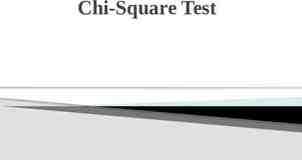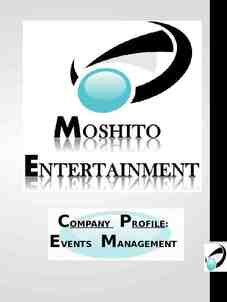Starbucks How Starbucks Changed Supply Chain Management From
13 Slides5.08 MB
Starbucks How Starbucks Changed Supply Chain Management From Coffee Bean to Cup
Starbucks Company Profile Began in 1971 as a single store in Seattle’s Pike Place Market as a roaster and retailer of whole bean and ground coffee, tea and spices. Starbucks is named after the first mate in Herman Melville’s Moby Dick. Their logo is also inspired by the sea—featuring a twin-tailed siren from Greek mythology. Mission: To inspire and nurture the human spirit—one person, one cup and one neighborhood at a time.
01/20/2019 https://www.youtube.com/watch? v XUBeH7VQaFY
Main Stages of Production
Starbucks Supply Chain https://www.youtube.com/watch? v ElYNhGbOTOQ
Starbucks Distribution Flow
The Starbucks Supply Chain Transformation Reorganize: In the latter stages of 2008, the company took an important step to simplify and centralize their previously fragmented supply chain. The team reorganized it so that every role fell into one of four basic functional groups: plan, source, make, and deliver. Cut cost and improve service: With the reorganization accomplished, each functional group was tasked with finding improvements. The sourcing group, for example, worked on identifying the factors that were causing price increases. Through research, it better understood what products should cost, and as a result, could negotiate better contracts. For its part, the manufacturing group determined that it could reduce cost as well as delivery time by opening a fifth U.S. roasting plant. Another important aspect of the transformation was the introduction of weekly scorecards with very clear service, cost, and productivity metrics. This approach allowed the extended supply chain to have a common frame of reference, with goals aligned with overall enterprise success. One of the key logistics measures was that of order receipt “On time in full.” Future capabilities: With systems established to ensure supply chain execution in the present and into the near future, the company began a process of taking particular care to hire only the best talent available to replenish its supply chain leadership team. The company also committed itself to onboard training for existing staff. Source: The Balance Small Business https://www.thebalancesmb.com/how-starbucks-changed-supply-chain-management4156894
Innovation at
Super-Sized Cafe Starbucks Corp. is testing its upscale and super-sized cafe concept overseas with a Roastery in China, the company’s fastest-growing market, as the pace of worldwide sales stalls. The 30,000 square-feet store--about half the size of a soccer pitch--opens in Shanghai and is part of moves championed by founder and Chairman Howard Schultz. Customers at the cavernous new store on the famous West Nanjing Road shopping strip can watch beans being roasted, sample high-end brews and use a Starbucks augmented reality digital app to interact with the store. https://www.youtube.com/watch? v PI76gHMMmVk&vl en
Starbucks Introduces AR (Augmented Reality) By Linda Dahlstrom / Starbucks Newsroom SHANGHAI, China – Stand in front of the roasting cask at the first Starbucks Reserve Roastery in Asia and you’ll see a staggeringly beautiful, two-story copper vessel adorned with nearly 3,000 hand carved traditional Chinese chops, or stamps. But hold your phone up to it, and new worlds reveal themselves. Suddenly, it’s as if you’ve gone through the looking glass. Via your phone, you’ll be able to peer inside the cask. You’ll be able to watch an animated version of newly roasted beans dropping into the cask. You can virtually see them resting before they are whisked through copper pipes to the coffee bars. You can read about the process a bean goes through on the way to becoming a cup of coffee. What’s https://www.entrepreneur.com/video/ 305813
Supply Chain Planning Supply planning determines how best to fulfill the requirements created from the demand plan. The objective is to balance supply and demand in a manner that achieves the financial and service objectives of the enterprise. Production planning addresses the production and manufacturing modules within a company. It considers the resource allocation of employees, materials, and of production capacity. Demand planning is the process of forecasting demand to make sure products can be reliably delivered. Effective demand planning can improve the accuracy of revenue forecasts, align inventory levels with peaks and troughs in demand, and enhance profitability for a particular channel or product. Sales and operations planning (S&OP) is a monthly integrated business management process that empowers leadership to focus on key supply chain drivers, including sales, marketing, demand management, production, inventory management, and new product introduction. Source: https://www.anaplan.com/blog/5-steps-to-smart-supply-chain-planning/
Sample PowToon Project on Starbucks https://www.youtube.com/watch?v I5RB29kf EK8
Creating an Infographic


















